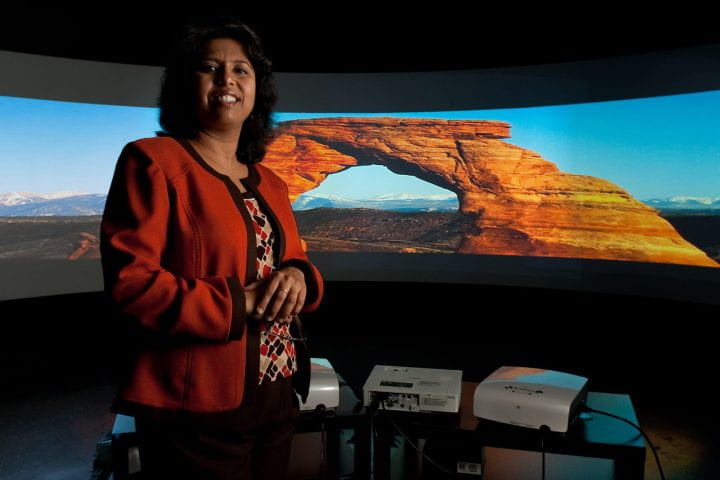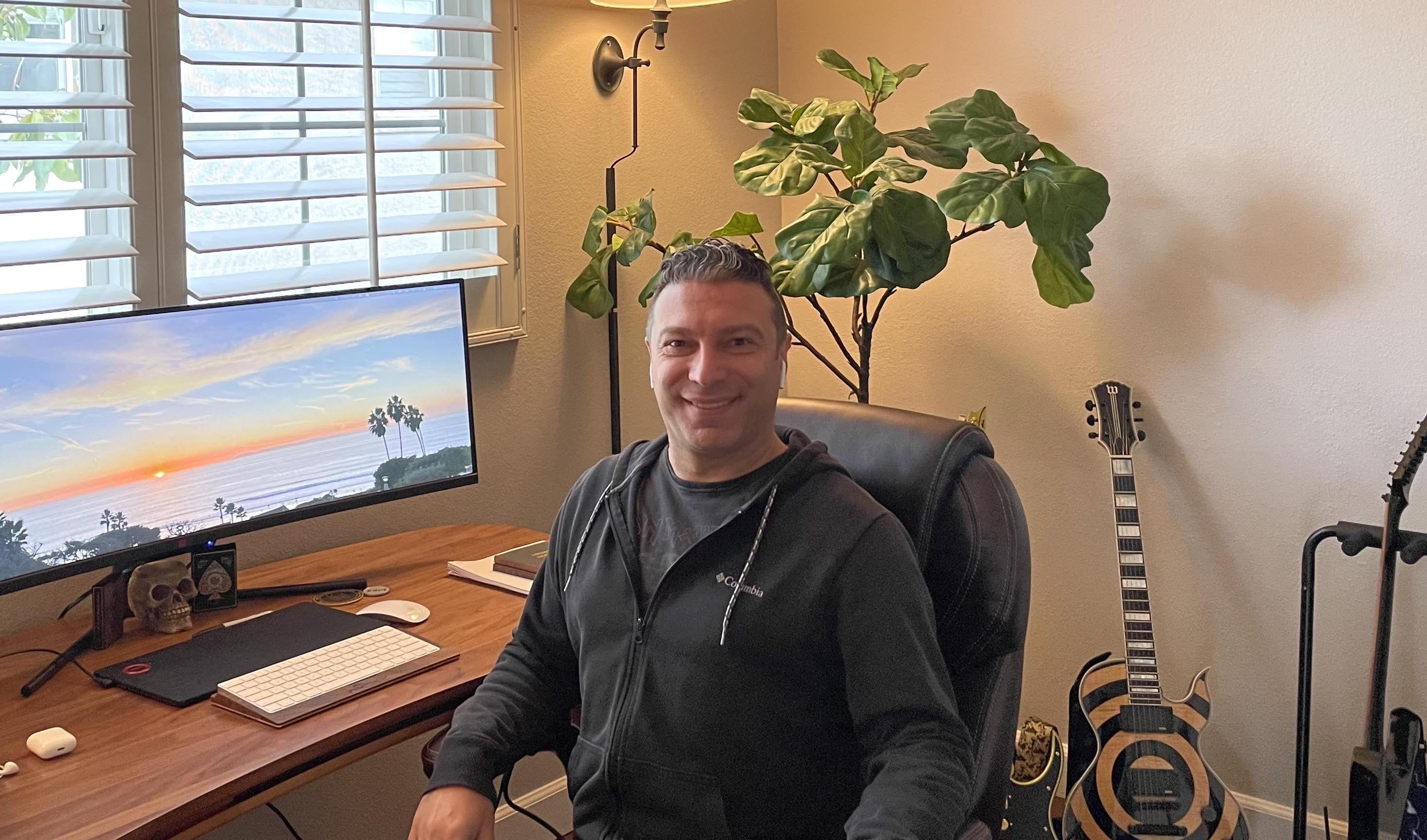Visualizing the future
Computer science team develops novel display technologies.

It appears that Aditi Majumder really can be in two places at once. On a late September afternoon, she stands in Arches National Park, its signature red rock and blue sky unfurling around her. But Majumder is not in Utah; she’s in the Visualization Lab she manages at UC Irvine’s division of the California Institute for Telecommunications & Information Technology (Calit2).
“We call these ubiquitous displays,” says the associate professor of computer science, referring to the behind-the-scene technology. As the term implies, ubiquitous displays may soon be used just about everywhere, from huge domes to small cell phones, from amusement parks to doctors’ exam rooms. Majumder’s team, based at the Donald Bren School of Information & Computer Sciences, creates novel software and hardware to make the graphics run better, faster and more cheaply.
Their work will be showcased Friday, Oct. 14, as part of a 10-year review of Calit2 requested by the University of California Office of the President. At the two-campus research institute, UCI and UC San Diego meld academic expertise with industry experience to ignite regional and statewide economic development. A panel of information technology and policy leaders, including Hewlett-Packard’s chief technology officer, will conduct the independent review.
Majumder’s endeavors perfectly illustrate the institute’s strengths, says Calit2’s Irvine director, Guann-pyng Li. She has collaborated with Walt Disney Imagineering and assisted Ostendo Technologies in building the first curved-screen, multi-projector monitor, now marketed by NEC/Alienware. In addition, she has consulted with military officers and campus doctors, presenting ideas for three-dimensional visuals, interactive video and mobile phone applications.
“Professor Majumder’s research is opening doors to a wide range of new digital projection and interactive display technologies,” says Li. “We’re pleased that Calit2’s state-of-the-art Visualization Lab has been instrumental in helping her advance this groundbreaking work.”
Showing off the technology – which Disney has experimented with – Majumder stands between a camera mounted on a tripod and four separate projectors aimed at a curving backdrop. To her left, doctoral student Behzad Sajadi taps away at a keyboard.
The crisp, color-drenched image of Utah’s natural wonders dissolves into four blurrier, faded images. Sajadi is showing the difference between traditional multi-projector systems and those with the software developed by the lab team.
“You can see what look like ghosts in the overlap areas; they’re not well blended. So that’s what you’re getting rid of,” Majumder says. “Also, you can see that the color is brighter in the overlap, because it’s more than one projector. Those kinds of issues are fixed with our software.”
While amusement parks, flight training operations and others have long created virtual reality environments, the UCI group’s software will be compatible with new digital equipment and allows the use of everyday cameras and far cheaper projectors. Perhaps most important, the calibration process between the camera and the projectors – key to image quality – is completely automated.
“You can do this with the single press of a button,” Majumder says. “An elementary school could have its own little planetarium. It would be easy to build and not cost very much.”
Doctoral student Duy-quoc Lai shows off a different technology, swiping his hand in front of an interactive map of the world and instantly zooming in to Eastern Europe. Behind the screen, a bank of cameras and projectors collate and adjust data seamlessly based on hand movement. Once perfected, the software could let multiple cell phone users project a video clip all at once on a wall at a party or business meeting. Doctors could someday employ such technology to locate and examine tumors in the human body.
Majumder, who came to UCI in 2003 from the University of North Carolina at Chapel Hill, has two patents here. Papers she wrote for virtual reality conferences hosted in 2009 and 2010 by the world-renowned Institute of Electrical & Electronics Engineers (IEEE) were named best of the year.
She sometimes gets ideas from Hollywood movies, such as “Minority Report”: “I saw Tom Cruise bring in a device and make this sweeping hand gesture, and I thought, ‘Ah, that’s very cool. I wonder if I could make a projector that would allow that.’”
Majumder knew her team was on the right track when she brought her daughter to the lab one Friday night. The 4-year-old ran up to the map on the wall, waved her hand and laughed gleefully as it zoomed out.
“Mommy, this is the big iPhone,” she giggled. The students were thrilled that her tiny hand had worked just as well as their larger ones. Long nights of crafting computer algorithms and road testing the software had paid off.



